Walkability
Being physically active is one of the most important steps Tennesseans of all ages can take to improve their health. The Tennessee Department of Health promotes walking and walkable communities to get our residents walking and wheelchair rolling to increase their physical activity. Walking helps to prevent and reduce the risk of chronic diseases and premature death. Walking supports positive mental health and healthy aging as well.
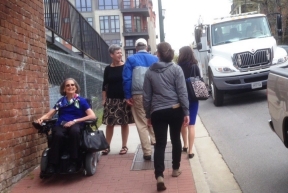
What are the health benefits of walking?
What are the benefits of walkability?
How does walkability aid prosperity?
Where are good places to walk?
What about nature walks?
What about people with special needs?
What about walking children to school?
What is the Surgeon General’s Call to Action?
Government partners
Additional resources
What are the health benefits of walking?
Even small increases in physical activity lead to meaningful improvements in health. The obvious health benefit of walking, running or wheelchair rolling is an increase in physical activity. Regular physical activity is known to reduce the risk of heart disease, high blood pressure, obesity, diabetes and cancer. Regular physical activity improves mental health and wellbeing. Some people even find walking improves their happiness.
What are the benefits of walkability?
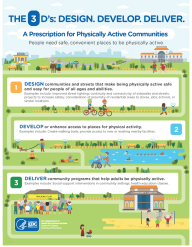
Walkability is a measure of how pedestrian friendly an area is for walking, running or wheelchair rolling. People want access to safe and convenient places to walk, run and roll as well as a culture that supports activity where we live, learn, work and play. Walkable neighborhoods can improve health, the environment and property values. Walkable communities benefit young and old alike providing multiple transportation options to reach destinations for entertainment, learning, work, exercise or relaxation. Obstacles such as high traffic, utility poles, poor maintenance and a lack of sidewalks reduce walkability. Options like crosswalks, vegetated buffers, curb extensions, traffic calming and school zones improve walkability. Walkability increases with connectivity. When communities are designed such that the places people want or need to go such as to school, work, church, park, store or bus stop are connected together it allows people to choose whether they walk, run or roll. This opportunity to choose benefits everyone no matter their income, age, race, ethnicity or socioeconomic status.
How does walkability aid prosperity?
In addition to improving physical and mental health, promoting walking and walkable communities tends to build more vibrant neighborhoods and economically prosperous downtowns. Walkable communities have connectivity, safety, conveniences and other amenities that people want. Therefore, walkable places tend to have and maintain better property values. Walkable places tend to generate more shopping sales and sale taxes. Walkable places are also considered to be nice to visit which can increase tourism.
Where are good places to walk?
Some people like to walk alone down a path less traveled, some people walk to socialize with other people, and some like to walk with their pet. Some places where people like to walk include:
Parks – enjoy the green space in local, state, or national parks
Greenways – walk on paths designed for walking
Trails – take a hike on rustic paths
Shopping malls – walk comfortably indoors
Other places in a community can help to improve health by hosting walking activities or allowing people to walk there outside of business hours. Schools, churches and civic building sites can be good places to walk.
What about nature walks?
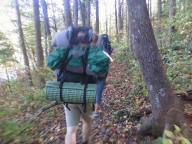
Walking outdoors and reconnecting with nature can be healthy. The congestion of city centers can increase the risk of anxiety, depression and other mental illnesses. Green spaces can reduce stress and calm the mind. Public parks, greenways and hiking trails are all good options for walking in a more natural and rustic setting. Observing wildlife such as birdwatching can be an enjoyable way to spend time as well as get physical activity. People have reported they are more likely to repeat exercising outdoors enjoying the natural sights and sounds as opposed to indoors on stationary equipment. From Land Between the Lakes in the west to the Appalachian Trail in the east, Tennessee is rich in outdoor places to walk to reconnect with nature.
What about people with special needs?
For some people, access to safe places to walk is not so simple. Without well-connected sidewalks or nearby destinations, our daily decision to walk or roll may seem strenuous. This is especially true for people who need to use assistive devices or wheelchairs to get around. Click over to our Healthy Equity – Accessibility webpage for more information and ideas on how to plan, design, build and maintain places to benefit all people.
What about walking children to school?
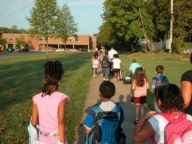
Safe Routes to School (SRTS) is a federally funded program focusing on the benefits of children walking and biking to school. It aims to improve safety for children and the community and provide opportunities to increase physical activity. A model program integrates health, fitness, traffic relief, environmental awareness, and safety. Safe Routes to School can be a great way to raise awareness about pedestrian safety around your school and community. Celebrate Walk and Bike to School Day. Your school may be able to apply for funding to participate through the Tennessee Department of Transportation’s Safe Routes to School Program.
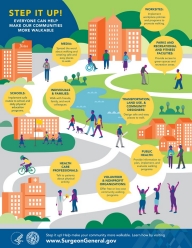
Robust scientific evidence has shown physical activity is critical for both preventing and treating many chronic conditions. Being physically active is one of the most important ways to improve health and well-being throughout our lives. Step It Up! The Surgeon General’s Call to Action to Promote Walking and Walkable Communities recognizes that everyone should have access to spaces and places that make it safe and easy for us to walk or wheelchair roll—whether in urban, suburban, or rural settings.
The Call to Action is applicable to the health of people at all ages and stages of life. Walking is the most common activity of teens and adults. It requires no specialized skills or equipment and is a great first step for anyone who has been inactive. Taking a walk with family or friends can help our emotional well-being and connect us to our communities. Walking helps active older adults enjoy a good quality of life and live more independently.
According to the Call to Action, this means city and neighborhood design should include well-maintained sidewalks, pedestrian-friendly streets, access to public transit, adequate lighting and desirable destinations that are close to home. The Surgeon General asks us to recognize and embrace our role in building the great American community, a place where being physically active is not only easier but also more engaging and fun.
Government Partners
U.S. Surgeon General
Step it up! The Surgeon General’s Call to Action to Promote Walking and Walkable Communities
www.surgeongeneral.gov/library/calls/walking-and-walkable-communities
Centers for Disease Control and Prevention (CDC)
Active People, Healthy Nation
www.cdc.gov/physicalactivity/activepeoplehealthynation/index.html
Why Walk? Why not?
www.cdc.gov/physicalactivity/walking
Community Strategies
www.cdc.gov/physicalactivity/community-strategies
Tennessee Department of Transportation
Bike and Pedestrian Program
www.tn.gov/tdot/multimodal-transportation-resources/bicycle-and-pedestrian-program.html
Tennessee Pedestrian Laws
https://www.tn.gov/tdot/multimodal-transportation-resources/bicycle-and-pedestrian-program/resources11/tennesse-pedestrian-laws.html
Tennessee Department of Environment and Conservation
State Parks - Hiking
tnstateparks.com/activities/hiking
Park Trails Map
tnstateparks.com/about/park-trail-maps
U.S. Federal Highway Administration
Livability Initiative
http://www.fhwa.dot.gov/livability
U.S. Environmental Protection Agency
Smart Growth
http://www.epa.gov/smartgrowth
Additional resources
America Walks
http://americawalks.org
Pedestrian and Bicycle Information Center
website
www.pedbikeinfo.org
National Center for Safe Routes to School
Walk Bike to School
www.walkbiketoschool.org
Tennessee Recreation and Parks Association
Benefits of Parks and Recreation
www.trpa.net
Tennessee Trails Association
Benefits of Parks and Recreation
www.trpa.net
American Public Health Association
Transportation and Health
www.transportation.gov/transportation-health-tool
Helpful documents
American Public Health Association (APHA)
Walking: a Simple Route to Improve your Health - English (PDF)
thenationshealth.aphapublications.org/sites/default/files/additional-assets/healthyyou/HealthyYouWalking.pdf
Caminar: una simple actividad que ayuda a mejorar la salud - Spanish (PDF)
thenationshealth.aphapublications.org/sites/default/files/additional-assets/healthyyou/HealthyYouWalkingSP.pdf
Alliance for Biking and Walking
Bicycling and Walking in the United States 2016 Benchmarking Report (PDF)
www.aarp.org/content/dam/aarp/livable-communities/documents-2016/2016-WalkingBicyclingBenchmarkingReport.pdf
US Department of Health and Human Services
Strategies to Increase Physical Activity Among Youth (PDF)
health.gov/paguidelines/midcourse/pag-mid-course-report-final.pdf